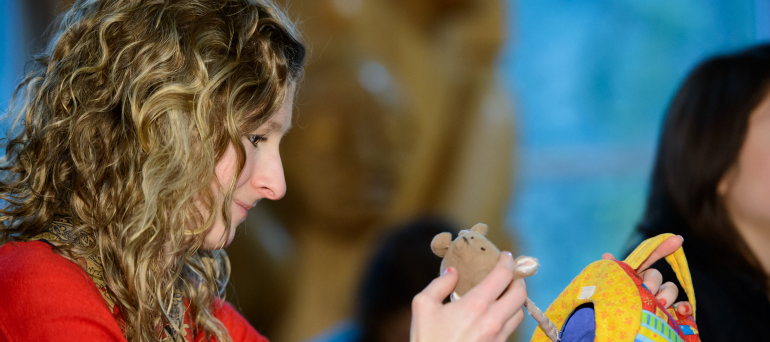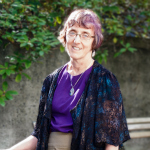A new speech pathology course focused on First Nations communities gets students talking about cultural differences
When Professor of Speech-Language Pathology May Bernhardt began exploring how child language development was being evaluated and treated in Aboriginal communities, she realized how much she and her students had yet to learn.
“We realized our students didn’t know anything about First Nations communities — they were either afraid, or didn’t know what to do,” Bernhardt says. “And the communities were wary, because we were overdiagnosing kids in those communities with language difficulties, based on norms developed in the middle-class United States.”
The result was a new course, and one of UBC’s most concerted efforts at fostering Aboriginal understanding: “Approaches to Speech Language Pathology and Audiology for People of First Nations, Metis and Inuit Heritage.” Of the 11 Canadian universities that offer degrees in audiology or speech-language pathology, only UBC has such a course.
Language and identity
The course’s premise is that language is a crucial component of identity — how we speak, and how we process what we hear, depends largely on who we are. So determining if someone is having trouble speaking or hearing, and working to remediate real or perceived deficiencies, must take into account cultural differences between the examiner and the examined.
For example, children who are being evaluated for potential speech problems are, of course, asked to speak. But one-on-one conversations with an adult may not feel natural to many Aboriginal children, who are often encouraged to learn by listening and observing.
Aboriginal children also may use a dialect of English from their community, which can deviate from the “standard English” used by speech-language pathologists.
“When does a child have an actual problem, and when is it just a problem in the mind of the examiner or school? We’re just beginning to figure that out,” Bernhardt says.
Moe the Mouse
Speech-language pathology and audiology students learn about the history of residential schools; create artwork, perform dramatic readings or create journals of reflection; and learn culturally-sensitive techniques and strategies, such as using group story-telling for speech evaluations, instead of one-on-one conversations.
Another technique is Moe the Mouse, one of a dozen stuffed animals created by two B.C. speech language pathologists as a way of drawing out pre-school Aboriginal children during speech evaluation and therapy sessions. Each animal represents a different sound.
Audiologists have taken up Moe as well — every time the child hears a tone in a headphone, Moe deposits a nut in a “tree” (actually, a milk carton).
“You have to draw their attention to something that is more tangible to their culture,” says Navid Shahnaz, an Associate Professor of Audiology and a course co-instructor. “Moe the Mouse is a good way to make that connection and establish a good rapport. If children are scared of you, they’re not going to respond to the beep, and they’re not even going to let you put those headphones on.”
But the most popular part of the course is the community learning experience, in which students spend time with agencies, organizations or individuals providing services to Aboriginal communities, and report back to the instructors and their fellow students on their activities and insights.
“You can’t read about cultural safety and sensitivity,” Bernhardt says. “You have to do it.”


